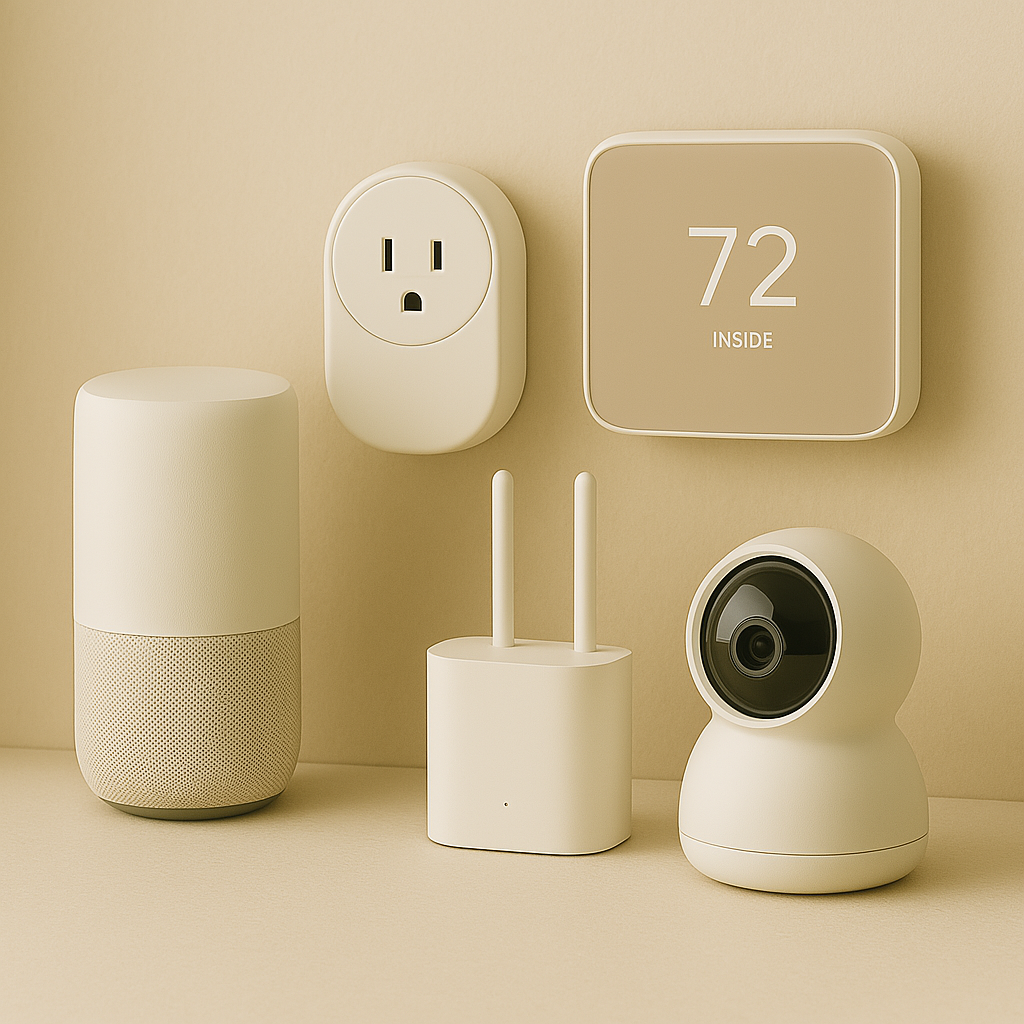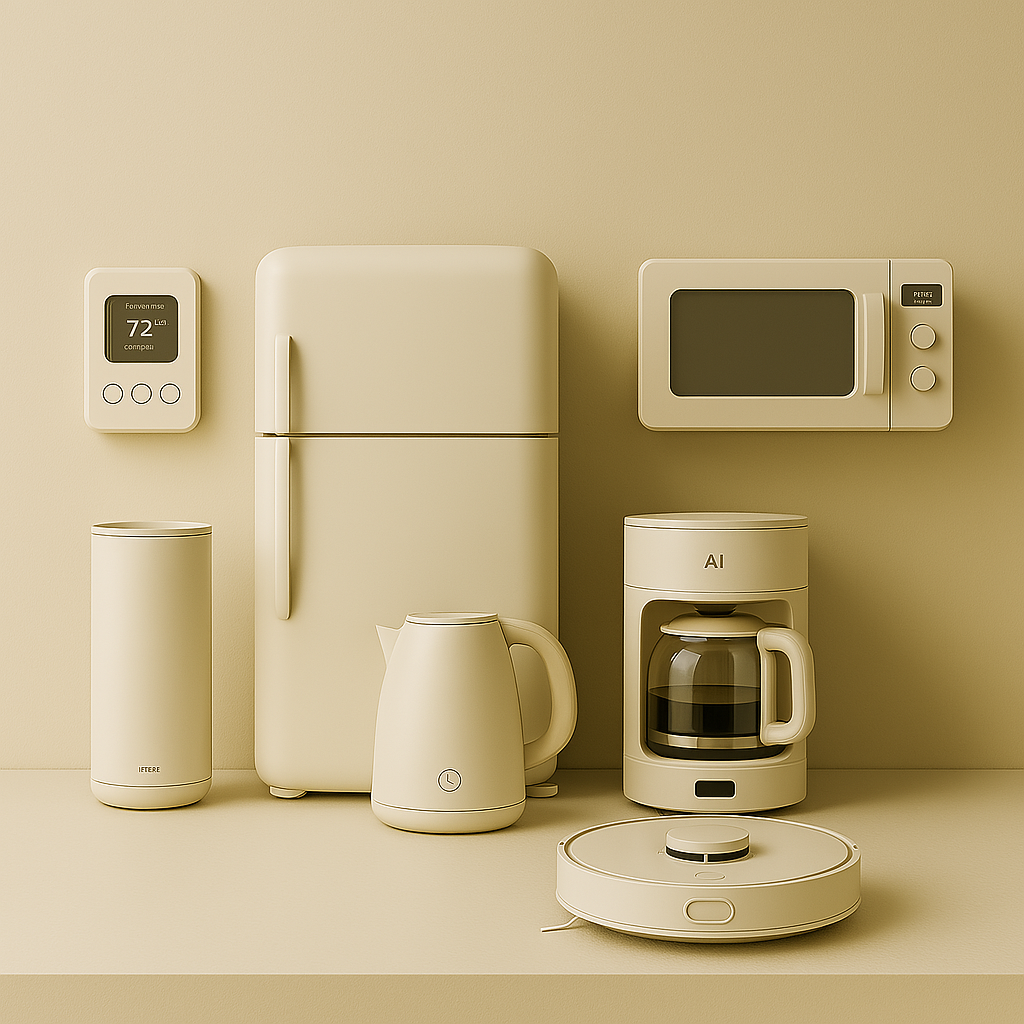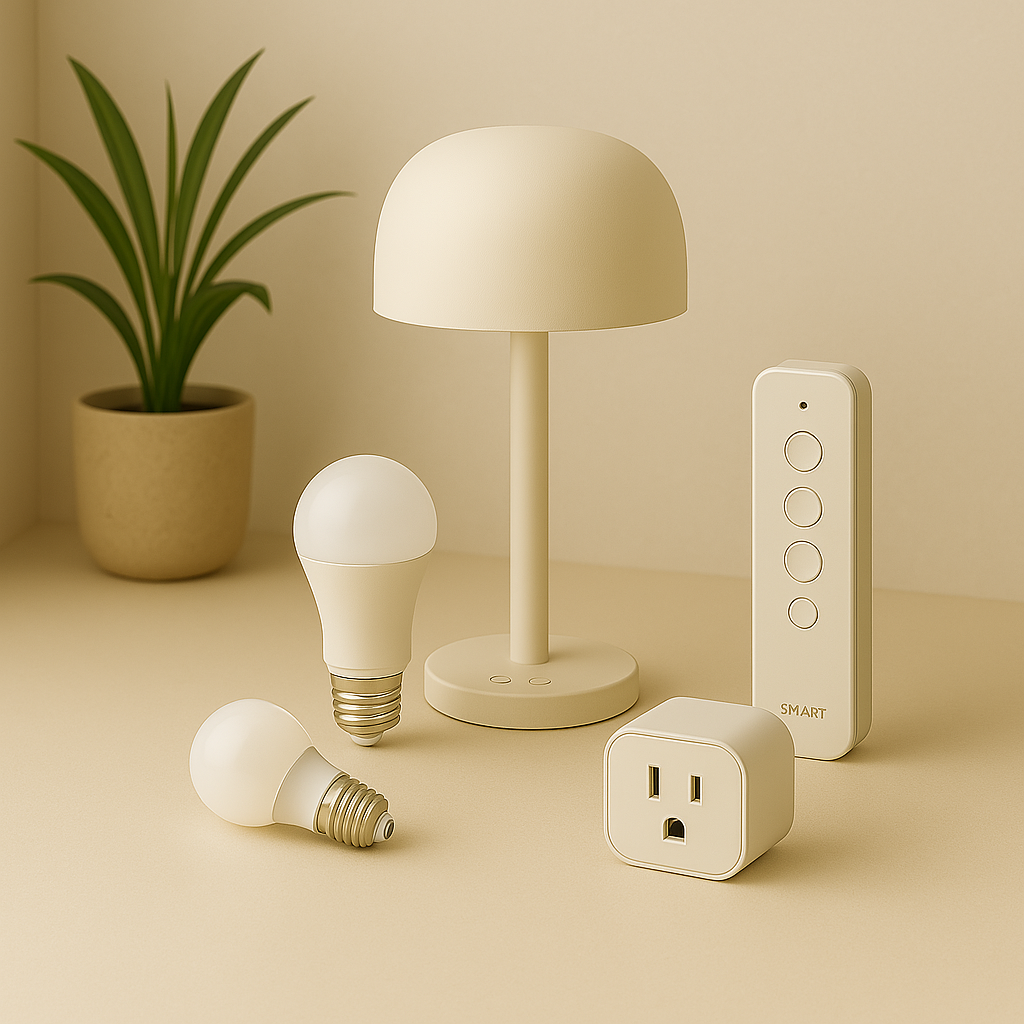A Beginner’s Guide to Building a Smart Home
Creating a smart home doesn’t have to be complicated or expensive. With the right strategy, even beginners can transform their living spaces into connected sanctuaries that enhance comfort, convenience, and efficiency. This guide outlines seven essential steps to build a smart home that fits your lifestyle, using SmartBlip’s beginner-friendly solutions.
7 Steps to Build Your Smart Home: A Beginner’s Guide
1. Start With a Smart Hub
A reliable smart hub is the foundation of your smart home, acting as the central brain to connect and control your devices. Popular options like Amazon Echo, Google Nest Hub, and Apple HomePod support a wide range of smart gadgets and voice assistants—Alexa, Google Assistant, or Siri—for seamless integration. For example, with an Amazon Echo, you can say, “Alexa, turn on the lights,” to control compatible devices. SmartBlip recommends choosing a hub that aligns with your preferred ecosystem, ensuring a smooth setup and unified experience.
2. Choose Compatible Devices
Compatibility with your chosen hub is key to a cohesive smart home system. From smart lights and Wi-Fi plugs to thermostats, ensure your devices work together seamlessly. Brands like Philips Hue (smart lighting), TP-Link Kasa (smart plugs), and Ecobee (thermostats) offer easy setup and broad compatibility with Alexa, Google Home, and Apple HomeKit. For example, a Philips Hue bulb can be controlled via your Google Nest Hub. SmartBlip’s collection of compatible smart home devices makes building your connected space simple.
3. Prioritize Key Areas
Start by automating rooms that impact your daily comfort the most: - Living Room: Install smart lights to create ambiance for movie nights, and add media control devices like a smart TV for seamless entertainment. - Kitchen: Use smart appliances like coffee makers to have your morning brew ready when you wake up. - Bedroom: Add air purifiers for clean air while you sleep, and mood lighting for a relaxing atmosphere. - Bathroom: Incorporate waterproof smart speakers for music in the shower, or smart mirrors with built-in lighting. Prioritizing these areas enhances your daily routine, and SmartBlip offers devices to get started in each room.
4. Optimize for Energy Efficiency
Energy efficiency is a cornerstone of smart home automation, helping you save money and reduce your environmental impact. Use energy-saving smart plugs, scheduling systems, and thermostats to lower consumption. For example, a TP-Link Kasa smart plug can schedule appliances to turn off when not in use, while an Ecobee thermostat adjusts temperatures based on your routine. SmartBlip’s energy-efficient devices help you create a greener, cost-effective home while maintaining comfort.
5. Use Mobile Apps for Control
Control your smart home from anywhere using mobile apps. Most smart gadgets come with apps like Google Home, Tuya Smart, or Smart Life, allowing you to schedule tasks, automate routines, and monitor devices in real-time. For example, use the Philips Hue app to dim lights at sunset, or the Ecobee app to adjust your thermostat remotely. These apps also provide usage insights to optimize performance. SmartBlip’s devices are compatible with leading apps, making management easy.
6. Strengthen Network Security
Network security is crucial to protect your smart home from unauthorized access. Use strong, unique passwords for each device and enable two-factor authentication (2FA). Set up a dedicated IoT network to isolate smart devices from your main network, reducing breach risks. For example, if a hacker accesses your smart speaker, a separate network prevents them from reaching your personal devices. SmartBlip recommends regularly updating firmware to patch vulnerabilities, ensuring your smart home remains secure.
7. Explore Automation & Routines
Elevate your smart home with automated routines to simplify daily life. Create a “Good Morning” routine to turn on lights, start your coffee maker, and open smart shades with one command. Or set an “Away Mode” to arm your security system and lower your thermostat when you leave. Platforms like IFTTT (If This Then That) and Home Assistant allow advanced automations, such as activating an air purifier when air quality drops. SmartBlip’s devices support these platforms, enabling personalized routines.
Why Build a Smart Home?
A smart home offers numerous benefits for modern living. It enhances convenience—control devices with a tap or voice command, saving time. It improves energy efficiency, reducing utility bills and your carbon footprint, aligning with global sustainability goals. Smart homes also increase comfort and security with automated routines and real-time monitoring. Plus, they add value to your home, appealing to tech-savvy buyers. SmartBlip helps you create a smart home tailored to your needs.
How to Get Started with Your Smart Home Journey?
Begin by choosing a smart hub like Amazon Echo, Google Nest Hub, or Apple HomePod. Select compatible devices for key areas—living room, kitchen, bedroom—focusing on daily needs. Prioritize energy efficiency with smart plugs and thermostats, and use mobile apps to set up schedules. Strengthen network security with strong passwords and a dedicated IoT network. Explore automation platforms like IFTTT for custom routines. SmartBlip’s beginner-friendly smart devices make building your connected space effortless.
Frequently Asked Questions (FAQ)
Q: What’s the best smart hub for beginners?
A: Hubs like Amazon Echo, Google Nest Hub, and Apple HomePod are great for beginners, offering broad compatibility and easy setup with SmartBlip devices.
Q: How do smart homes save energy?
A: Smart devices like thermostats and plugs automate energy usage, turning off devices when not needed and optimizing settings to reduce consumption.
Q: Can I control my smart home remotely?
A: Yes! Apps like Google Home or Smart Life let you control your smart home from anywhere.
Q: How does a smart home improve security?
A: Smart homes enhance security with real-time monitoring, automated routines like “Away Mode,” and strong network practices to protect your devices.
Q: Are smart home devices easy to install for beginners?
A: Yes, SmartBlip devices are designed for easy setup—most require just a plug-in and app connection, perfect for beginners.
Conclusion: Build Your Smart Home with SmartBlip
Smart home automation brings comfort, convenience, and efficiency to your daily life. From choosing a smart hub to setting up automated routines, this guide helps beginners create a connected sanctuary. Start small, stay consistent, and transform your space with SmartBlip’s beginner-friendly devices. Explore our collection today and take the first step toward a smarter, more stylish future!







Leave a comment
This site is protected by hCaptcha and the hCaptcha Privacy Policy and Terms of Service apply.